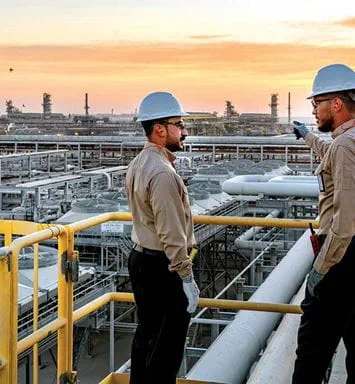Gas Investment
Our Vision: Investing to grow our gas portfolio
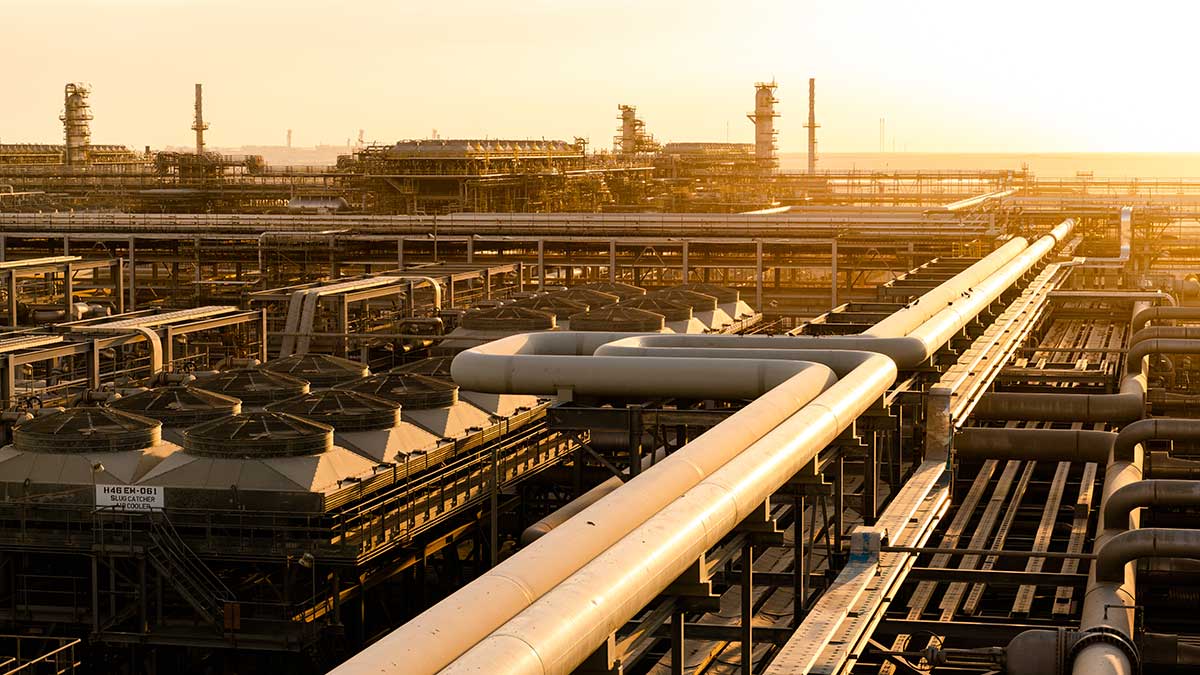
Global July 20, 2023 - By
Aramco’s large-scale Upstream investment program includes plans to increase gas production by 2030.
Our vision is to be the world’s preeminent integrated energy and chemicals company, operating in a safe, more sustainable, and reliable manner.
To achieve our vision, we focus on four strategic themes across our businesses.
Upstream preeminence
As the principal engine of value generation, the company intends to maintain its position as the world’s largest crude oil company by production volume and one of the lowest-cost producers. The company’s vast reserves base, spare capacity, and unique operational flexibility allow it to effectively respond to changes in demand.
Downstream integration
The company has a dedicated system of domestic and internationally wholly-owned and affiliated refineries that are critical to monetizing its upstream production. Through continued strategic integration, the company captures additional value across the hydrocarbon chain.
Lower-carbon initiatives
The company aims to lower the net carbon emissions of its operations and to support the global energy transition through development of lower-carbon products and solutions across the energy, chemicals, and materials sectors.
Localization and the promotion of national champions
The company facilitates the development of a diverse, more sustainable and globally competitive in-Kingdom energy ecosystem to underpin the company’s competitiveness and support the Kingdom’s economic development.
(Source: Saudi Aramco Annual Report 2022)
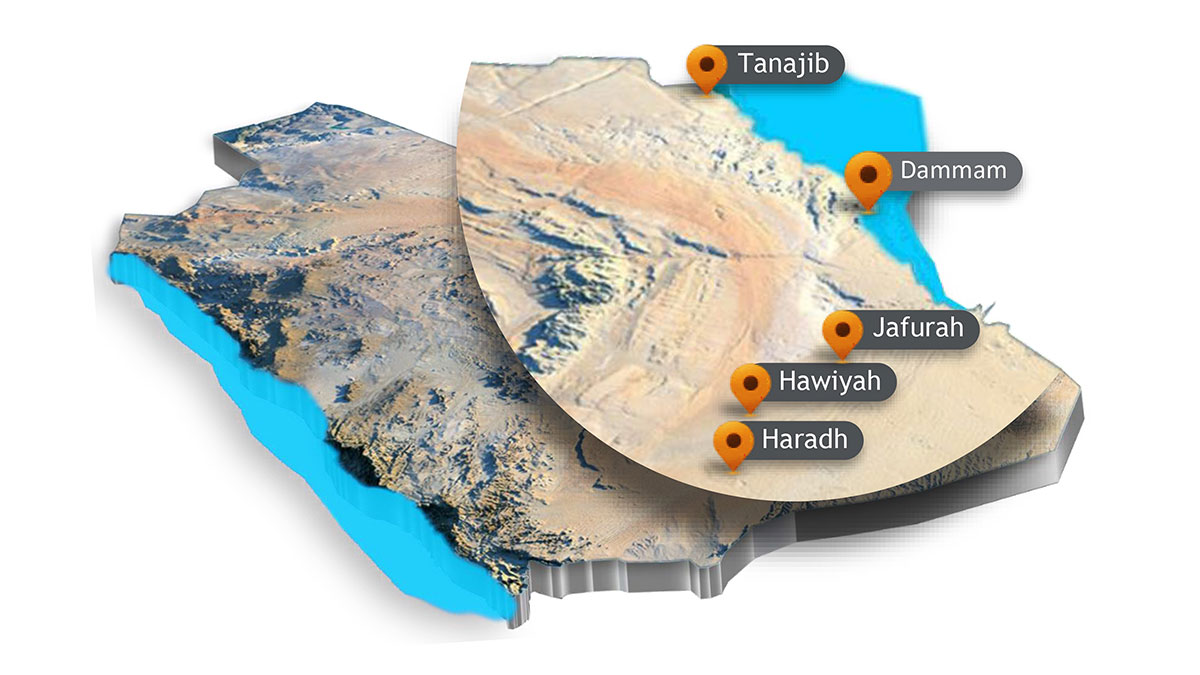
Why double gas production by 2030?
- Meet growing demand for lower-carbon energy
- Additional liquid volume for export
- Support potential to build a hydrogen value chain
- Enable future export of blue ammonia.
Aramco gas reserves
201.9 Trillion standard cubic feet (Tscf)
2022 total gas production
10,617 Million standard cubic feet per day (MMscfd) Includes natural gas and ethane
Raw gas processing capacity
18.3 Bscfd
Increasing gas production
Conventional from 2023
Haradh / Hawiyah
Processing of 1.1 Bscfd raw gas
This integrated gas investment across multiple sites is extending the plateau life in southern gas fields for the next 20 years.
Spanning more than 24 sites and 30,000 km2, the development and increment includes nine new gas compression plants, modifications to 866 wellheads, and 2,700 kilometers of pipelines.
The expansion at Hawiyah Gas Plant (HGP) is transforming it into the company’s largest gas plant, and among its new additions are two new gas treatment trains, one dehydration train, two sales gas compressors, flare and blowdown recovery systems, and a steam turbine generation unit.
HGP will supply additional rich feed gas to ‘Uthmaniyah Gas Plant Deep Ethane Recovery, while gas processing will be both sustained and increased at Haradh Gas Plant.
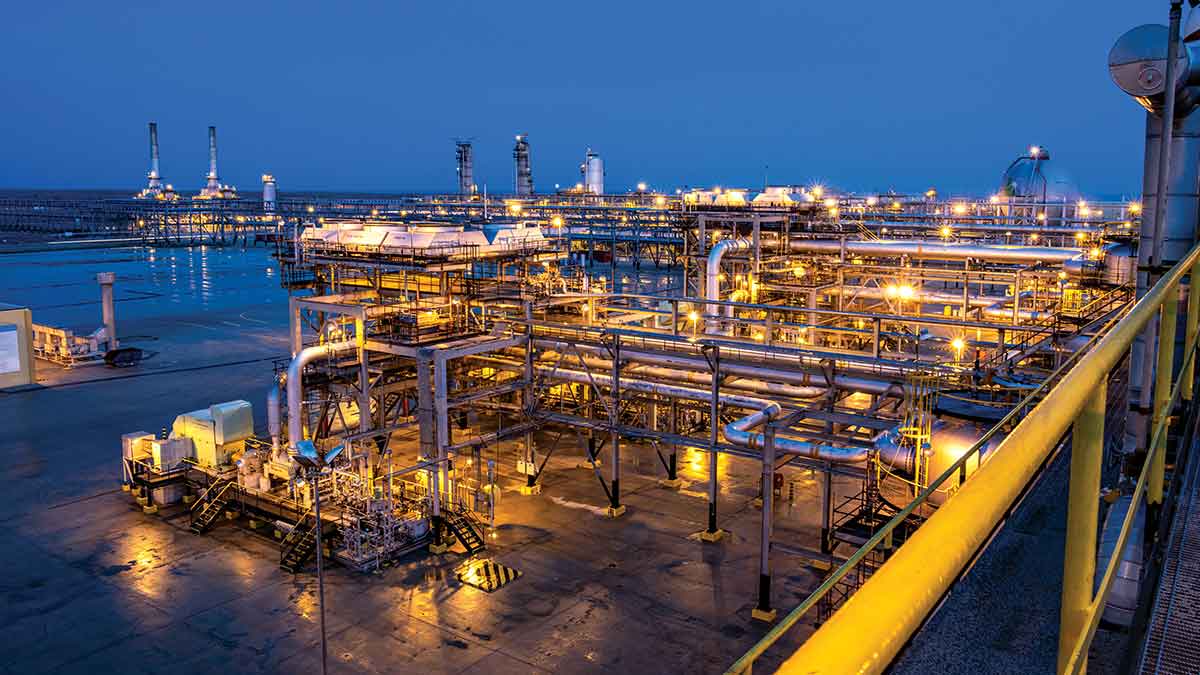
Tanajib
Processing capacity of 2.6 Bscfd raw gas
The Marjan Crude Oil Increment program is an integrated development project for oil, associated gas, non-associated gas and cap gas.
The program includes an additional 2.6 Bscfd of associated and nonassociated gas processing facility.
Oil and gas produced from the field is piped onshore for further processing.
The program includes expansion of the onshore oil facilities and the construction of a new gas plant that features gas treatment and processing units, natural gas liquids (NGL) recovery and fractionation units, and gas compression facilities.
The project is expected to be onstream by 2025.
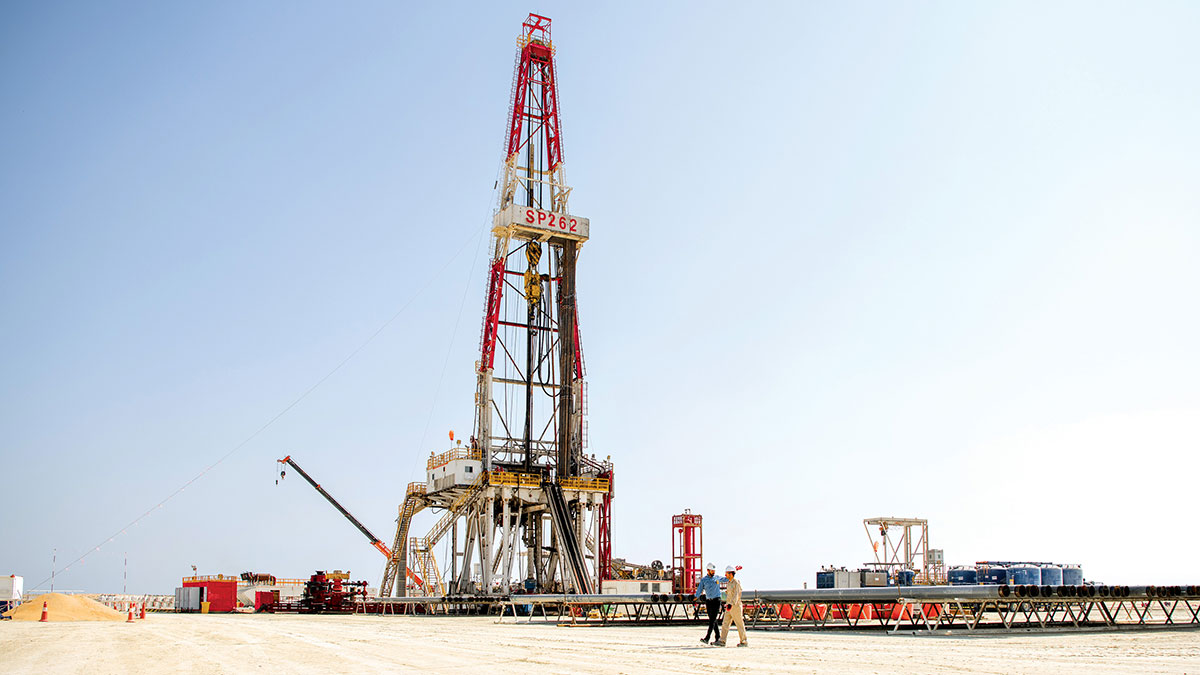
Unconventional from 2025
Phased development | 2 Bscfd sales gas
Jafurah is the largest liquids-rich shale gas development in the Middle East with an estimated 200 Tscf of gas in place, spread over an area measuring 17,000 km2.
Initial production is expected to commence in 2025, gradually increasing to 2.0 Bscfd by 2030.
Jafurah development project aims to produce 418 million scfd of ethane and 630,000 barrels of NGLs and condensates per day. This will make the Kingdom one of the world’s largest natural gas producers.
Production is expected to provide feedstock for lower-carbon future fuels such as blue hydrogen and blue ammonia in an effort to reduce CO2 emissions intensity, in alignment with the Kingdom’s net-zero initiative. In addition, it will provide feedstock for petrochemicals, as well as help meet expected growing local energy demand.
Storage from 2024
Hawiyah Gas Storage Plant
Phased development | 2 Bscfd sales gas
The Kingdom’s first underground gas storage project, Hawiyah Gas Storage plant, commenced injection activities in 2022.
The impressive facility receives surplus sales gas from the Master Gas System for injection during off-peak periods into depleted nonassociated gas reservoir, Unayzah.
The project enables stored gas to be reintroduced into the Master Gas System as demand increases in Saudi Arabia during the summer season.
Mitigating liquid burning avails that same liquid for export use, and processing the gas increases production of highly valuable byproducts such as ethane, condensate, and NGL.
